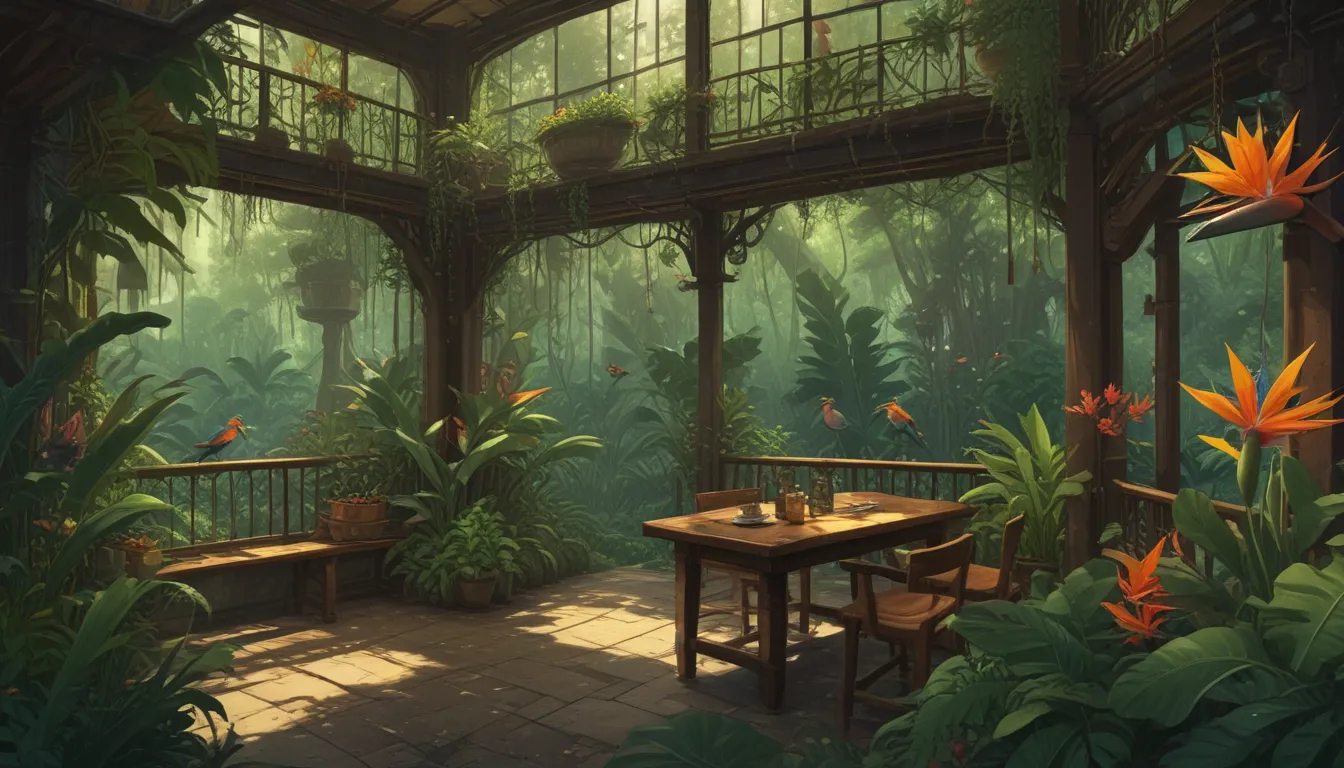Exploring the World of Bird of Paradise Plants: A Comprehensive Guide

If you have ever marveled at the beauty of tufted heads and uncanny beaks that are symbolic of bird of paradise flowers, then you are not alone. These magnificent plants, scientifically known as Strelitzia spp., are not only showstoppers with their stunning flowers but also possess silky evergreen foliage that adds texture and interest all year round.
Native to South Africa, bird of paradise plants are best suited for warm, humid regions and have become a popular choice for landscaping in tropical and subtropical areas across the globe. They are well-suited for USDA Hardiness Zones 10 to 12, with some species even surviving in parts of Zone 9 under proper care.
Whether you are considering them as indoor plants in colder zones or as outdoor specimens during the summer, it is essential to understand the key differences between the various types of bird of paradise plants before bringing them into your living space.
In this comprehensive guide, we will delve into the nuances of different bird of paradise species, helping you make informed decisions about selecting the right variety for your home or garden. So, let’s dive in!
Understanding Bird of Paradise Types
When it comes to bird of paradise plants, there are several species that you need to be familiar with:
- S. alba
- S. caudata
- S. juncea
- S. nicolai
- S. reginae
Let’s explore each of these species in detail to gain a deeper understanding of their unique characteristics:
1. S. alba
Known for its towering presence, S. alba is one of the tree-like species of the Strelitzia genus. With stunning white flowers and banana-like leaves, this perennial plant can reach heights of up to 30 feet in optimal conditions. Found in coastal areas of the western Cape region of South Africa and Madagascar, S. alba blooms from July to December, showcasing its majestic beauty.
2. S. caudata
Referred to as the “mountain wild banana,” S. caudata is a species that thrives in the mountains of southern Africa. Standing up to 20 feet tall, this plant features black-beaked, white-tufted flowers reminiscent of the traveler’s palm. Ideal for adding a touch of exotic flair to your landscape, S. caudata is an impressive specimen worth considering.
3. S. juncea
Also known as the narrow-leaf bird of paradise, S. juncea bears reed-like leaves and orange and blue flowers. Growing to a height of three to six feet, it is a great choice for cut flowers or border plants in tropical-style gardens. Once considered a variety of S. reginae, it was reclassified in 1974, making it a distinctive and visually appealing species for both indoor and outdoor cultivation.
4. S. nicolai
Resembling a banana plant, S. nicolai can grow up to 20 feet tall and is commonly known as the giant white bird of paradise. Adorned with white flowers and dark blue-gray beaks, this species serves as an excellent choice for outdoor landscaping in Zones 10-12. With its towering presence, S. nicolai can create a natural barrier or fence to enhance the beauty of your outdoor space.
5. S. reginae
Considered the most beautiful species of all, S. reginae features orange flowers that are a sight to behold. With a mature height of just five to six feet, it is an ideal choice for those seeking a manageable and visually striking plant for their garden. Blooming year-round, S. reginae thrives in warm climates but requires protection from freezing temperatures to ensure its well-being.
Bringing the Tropics Home
Among the various bird of paradise species, S. alba, S. juncea, S. nicolai, and S. reginae are the most commonly grown varieties across the world. Whether you are looking to enhance your outdoor landscape or bring a touch of the tropics indoors, these species offer a diverse range of options to suit your needs.
As you embark on your journey of growing bird of paradise plants, remember to consult our comprehensive guide on cultivating these beautiful specimens. Additionally, explore topics such as pruning, deadheading, and disease prevention to ensure the health and vitality of your plants.
What type of bird of paradise are you growing? Share your experience in the comments below, and feel free to showcase your plant with a photo!
For more insights and information on bird of paradise plants, check out these useful resources:
- How and When to Prune Bird of Paradise Plants
- Deadheading Bird of Paradise: How to Remove Spent Blooms
- How to Prevent and Treat Common Bird of Paradise Diseases
By understanding the unique characteristics and care requirements of different bird of paradise species, you can create a stunning and vibrant garden that captures the essence of these exotic plants.
Enjoy the journey of nurturing your bird of paradise plants and transforming your living space into a tropical oasis of beauty and tranquility.





